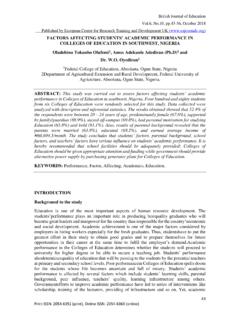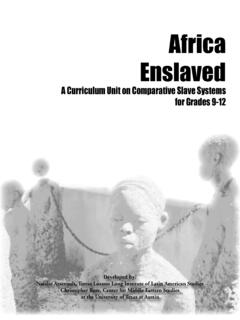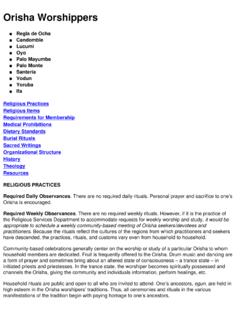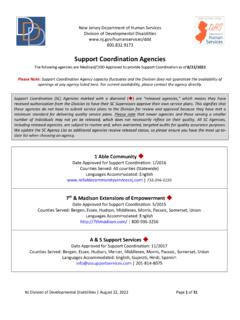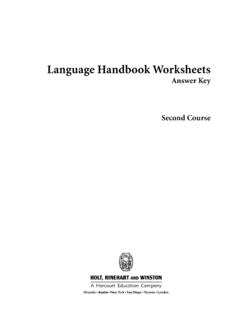Transcription of FACTSHEET SANTERÍA IN CUBA
1 FACTSHEETSANTER A IN CUBAUNITED STATES COMMISSION onINTERNATIONAL RELIGIOUS FREEDOM732 N. Capitol Street, NW, Suite #A714 Washington, DC 20401202-523-3240 February 2021 The Santer a Tradition in CubaBy Kirsten Lavery, Supervisory Policy AnalystIntroductionThis FACTSHEET highlights the Santer a practice in Cuba, providing an overview of this tradition and detailing the religious freedom conditions of its practitioners. Santer a is a syncretic religion based significantly in the traditions of the yoruba and incorporating elements of Catholicism. Today, roughly 70 percent of Cubans observe one or more Santeria or other religious practices based in an African tradition. Elements of Santer a and its African roots permeate Cuban culture, including by influencing Cuban art, food, music, and dance.
2 Many Cubans can openly and freely practice Santer a, including when interwoven with Catholicism. However, some Santer a practitioners and religious leaders, especially those who are part of unregistered and independent communities, have experienced ongoing violations of religious freedom, including harassment, detainment, and repeated attempts by the government to co-opt their religion. While this FACTSHEET is focused on the Santer a community, the Cuban government s treatment of independent Santer a practitioners and the impact of restrictive laws and policies on the Santer a community s enjoyment of the freedom of religion or belief is illustrative of broader religious freedom conditions in Afro-Cuban religions have long been an integral part of Cuban society.
3 Santer a is a syncretic religion rooted in the religious practices of the yoruba people, who were brought as slaves to Cuba from the Congo Basin and West Africa, that incorporates elements of Catholicism. In early times, Santer a developed and was practiced in secret, as Catholicism was the only religion permitted on the island by the Spanish colonial government. African gods were syncretized with Catholic saints and the religion adopted some Catholic religious practices. Practice of Afro-Cuban religions remained illegal even after the abolishment of slavery. Following the 1959 revolution, Santer a continued to be practiced on the island, despite restrictions on religion. While these restrictions aimed to suppress all religions, the Cuban government particularly targeted Catholicism and Santer a due to their importance to Cuban identity.
4 @ ManchinChairTony PerkinsVice ChairAnurima BhargavaVice ChairCommissionersGary BauerJames W. CarrFrederick A. DavieNadine MaenzaJohnnie MooreNury TurkelErin D. SingshinsukExecutive DirectorUSCIRF s MissionTo advance international freedom of religion or belief, by independently assessing and unflinchingly confronting threats to this fundamental FACTSHEET : THE SANTER A TRADITION IN CUBA: February 2021 2 Today, Santer a religious practices continue to be intermingled with Catholicism, with some interpretations requiring Catholic baptism for full initiation into the faith. Santer a practitioners make physical offerings to saints or deities, known as orishas.
5 Orishas typically have a Catholic counterpart. As one example, the Santer a orisha Och n is syncretized with the patron saint of Cuba, la Virgen de la Caridad del Cobre. While many Cubans blend the two religions, the Catholic Church does not officially recognize Santer a as a religion. As the Santer a faith developed in secret, the Santer a community did not build houses of worship and instead operates through private homes with altars and informal societies. There is no centralized authority for the tradition. Santer a display in Trinidad, CubaAlthough there are no independent and authoritative sources for religious demography in Cuba, an estimated 70 percent of Cuba s 11 million people perform some type of Santer a or other Afro-Cuban practice.
6 It is further estimated that 60 percent of Cubans self-identify as Catholic, and many self-identified Catholics incorporate Santer a practices into their faith. These synergies between Santer a and Catholicism make determining the number of Santer a practitioners particularly difficult. Religious Freedom ViolationsThe Cuban government uses a system of laws and policies, surveillance, and harassment to control religious groups and undermine the freedom of religion or belief. Government authorities repressively enforce these restrictions to ensure tight control over religious leaders, members of religious communities, and others deemed threats to the Cuban government s agenda due to their advocacy or support for religious freedom.
7 Many Cubans can freely and openly practice Santer a and celebrate its influence on Cuban culture. For those who blend religions, there is also space for many to practice Catholicism. At the same time, independent Santer a communities and practitioners whose beliefs and practices do not align with the Cuban government s agenda experience ongoing religious freedom violations. While the underground nature of the faith makes it difficult to obtain comprehensive information on the religious freedom conditions of Cuba s Santer a community, this section provides an overview of ongoing or recent violations of the religious freedom of the independent Santer a community and highlights representative examples of these violations based on available information.
8 Threat of Criminal Penalties due to Failure to RegisterIn Cuba, all religious groups are required to register with the Office of Religious Affairs (ORA), an entity within the Cuban Communist Party (CCP) operating out of the Ministry of Justice. Membership in an unregistered religious group is a crime. Given the omnipresent threat of criminal penalties, unregistered religious groups are particularly vulnerable and frequently subjected to harassment by the ORA and other government authorities in are several distinct Santer a communities on the island. One such group, the yoruba Cultural Association of Cuba, is registered with the ORA and allegedly government-controlled. The Free yoruba Association of Cuba (Asociaci n de Yorubas Libres de Cuba, or Free Yorubas ) is an independent Santer a community that was founded in 2012 by Santer a practitioners who did not agree with the yoruba Cultural Association.
9 The Free Yorubas have refused to register with the ORA, not wanting to come under the influence of the Cuban government. The Free yoruba s refusal to register has led to sustained harassment of this religious community and its leaders. Harassment and Detention of Santer a Religious Leaders and PractitionersAcross Cuba, certain religious leaders are the target of government-sponsored harassment campaigns. This harassment extends to several Santer a religious leaders and practitioners, particularly targeting members of the Free Yorubas. The Cuban government has accused this group of destabilizing society and subjected its leaders to arbitrary detentions and beatings, destruction of ceremonial objects, police monitoring, and searches-and-seizures without probable cause.
10 The Free Yorubas have also reported surveillance by state authorities, raising particular concern that state officials allegedly have hacked 3 USCIRF FACTSHEET : THE SANTER A TRADITION IN CUBA: February 2021their social media accounts and used them to spread smear campaigns. These allegations fall in line with the larger trend of Cuban state officials using social media to harass and defame religious Santer a leaders were pressured to support the new constitution during the reform process that led to Cuba s April 2019 constitution. Religious leader and activist Alexei Mora Montalvo was arrested for collecting opinions on the draft constitution in November 2018. As government authorities continued their harassment campaign against Montalvo and his family, Montalvo went on a 15-day hunger strike in February 2019.




